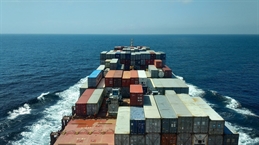
Ocean carriers’ schedule reliability continues to decline, with delays of up to 30 days on the worst-hit China-EU routes, and 21.94 days on the worst-hit China-US West coast routes according to container tracking data from real-time supply chain visibility firm, project44.
“If current circumstances hold, we’re going to see many more empty shelves heading into the holiday shopping season and beyond,” said Adam Compain, SVP Data Insights, project44.
“There’s no quick fix here. Unless demand drops significantly after the holiday rush, this could be a multi-year problem” said Josh Brazil VP, Data Insights, project44.
Meanwhile, maritime short term contracted rates inked between carriers and Beneficial Cargo Owners (BCOs) and freight forwarders continue their multi-year rise across major trade lanes with average China-EU container rates rising by triple digits year-over-year across major port pairs, reaching US$12,977/40’ Standard Dry container in August.
For China-US West Coast routes, short-term contracted rates were up 102% year-over-year to US$6,570 last month, according to Xeneta, which tracks ocean and air freight rate benchmarking and market analytics platform.
“The whole container shipping industry is under incredible stress right now, and it’s going to keep building,” Patrik Berglund, CEO, Xeneta added.
While many factors causing the delays are market and pandemic-driven, such as increased demand for consumer goods and pandemic-related bottlenecks, carriers are also cashing in on record revenues at the expense of shippers and a global economy where rising prices are ringing inflation alarm bells.
“Toughest in ocean freight history”
Berglund noted that “a drop in rates is not in sight as overall capacity will remain very tight,” adding that the upcoming contracting season can be “the toughest in ocean freight history for shippers.”
Brazil of project44 added that “shippers can no longer absorb the costs. Sustained astronomical shipping rates coupled with a delayed supply are already causing inflationary pressures in the broader economy.”
The project44 report noted that for the Yantian-Los Angeles route, between August 2020, and August 2021, delays for containers moving between the Chinese port of Yantian and the West Coast US port of Los Angeles increased from a monthly median of 2.46 days to 12.93 days.
Over the same time, the monthly average market price for China- West Coast US routes for a 40-foot container increased from US$3,247 to US$6,570. These numbers represent a 425% year-over-year increase in median days of delay, and a 102% percent increase in the average shipping prices, it added.
Shanghai – Long Beach recorded delays for containers moving between the Chinese port of Shanghai and the US West Coast port dipprf from a monthly median of 6.62 days to 4.92 days. However, project44 said over the same time, the monthly average market price for China-US West Coast routes for a 40-foot container increased from US$3,247 to US$6,570 – representing a 25% year-over-year decrease in median days of delay, and a 102% percent increase in the average shipping prices.
For the Shanghai-Rotterdam route for the same period, delays increased from 1.88 days to 15.19 days. The monthly average market price for China- EU routes for a 40-foot container also increased from US$1,650 to a whopping US$12,977.
project44 said this represent a 25% year-over-year increase in median days of delay, and a 686% increase in the average shipping prices.
Meanwhile, Yantian-Hamburg saw delays for containers rise from 0.47 days to 30.26 days – suggesting a serious breakdown in connectivity.
During the same August 2020 to August 2021 period, average market price for China- EU routes for a 40-foot container also mounted from US$1,650 to US$12,977 showing a 707% rise in median days of delay, against a 686% increase in the average shipping prices.
project44 said while some US ports are still receiving shipments from China without serious delay (by 2021 standards) extant delays remain costly, and are worsening in most cases.
Prices are also rising across all major US ports, painting an overall negative picture for shippers in the US.
It said looking to the EU, delays are more severe, and shipping costs have created an extremely challenging operating climate for businesses with China-EU supply chains.
“Shippers looking to shift supply chains to airfreight are running up against similar dynamics in that market. Already high air freight rates are expected to keep ticking upwards in the coming peak season, suggesting that demand for capacity will outstrip supply out of Asia, regardless of the mode, and that shortages and price increases on the consumer level will extend into 2022,” project44 added.



